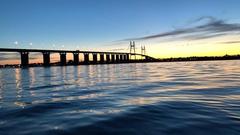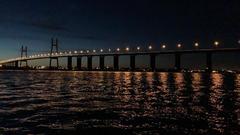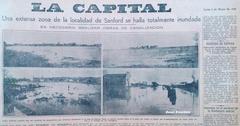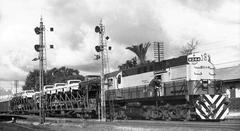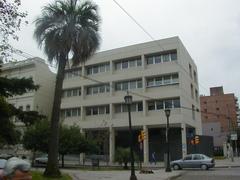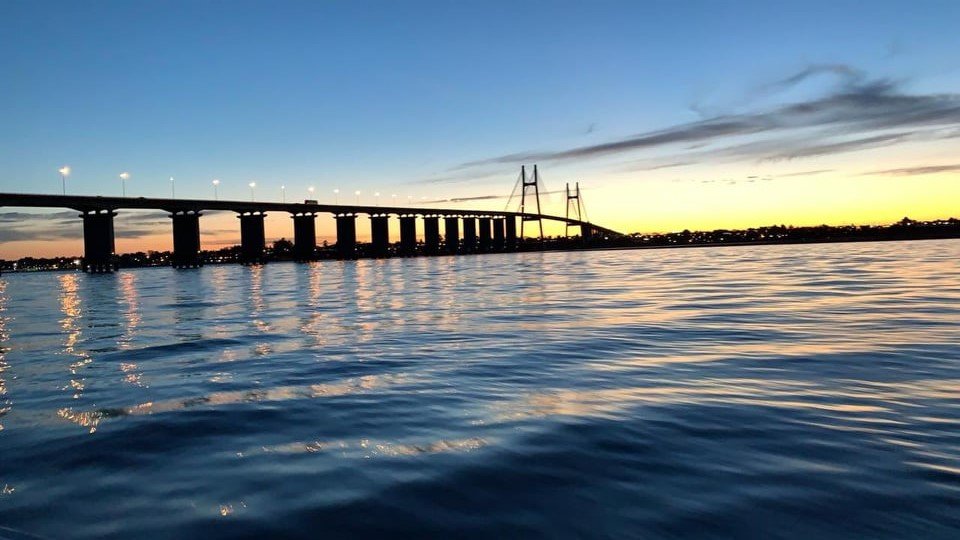
Rosario-Victoria Bridge: Visiting Hours, Tickets, and Comprehensive Travel Guide
Date: 15/06/2025
Introduction
The Rosario-Victoria Bridge, officially named “Puente Nuestra Señora del Rosario,” is an iconic structure spanning the Paraná River, connecting Rosario in Santa Fe Province with Victoria in Entre Ríos Province, Argentina. Since its completion in 2003, this 59-kilometer bridge system has revolutionized regional connectivity, stimulated economic growth, and become a must-see destination for travelers, engineering enthusiasts, and nature lovers. In addition to its crucial role in trade and transportation, the bridge offers breathtaking panoramic views, opportunities for river tourism, and access to cultural and natural attractions. This guide covers everything you need to know about visiting the Rosario-Victoria Bridge, including hours, ticketing, travel options, nearby highlights, accessibility, photography tips, and practical advice for making the most of your visit (Rosario Tourism Website; Webuild Group; Wikipedia).
Table of Contents
- Bridge Overview and Significance
- Visiting Hours and Tickets
- How to Get There
- Accessibility
- Guided Tours and Educational Visits
- Things to Do: Attractions and Activities
- Photography and Special Events
- Historical and Engineering Features
- Socio-Economic, Cultural, and Environmental Impact
- Visitor Tips and FAQs
- References
Bridge Overview and Significance
The Rosario-Victoria Bridge is one of Argentina’s most significant infrastructure projects. It not only links two key provinces but also serves as a strategic segment of the South American bioceanic corridor, facilitating trade between the Atlantic and Pacific coasts. With its striking cable-stayed main span and extensive viaduct system, the bridge is both an engineering marvel and a regional landmark. The structure enhances access to Rosario’s historical attractions, the natural beauty of the Paraná Delta, and the cultural vibrancy of both Rosario and Victoria.
Visiting Hours and Tickets
- Bridge Access: Open to vehicular traffic 24 hours a day, year-round.
- Pedestrian Access: Not permitted under normal conditions; allowed only during special events such as annual marathons.
- Tolls: Collected from vehicles at the bridge’s toll plazas. Fees vary by vehicle type and are payable on-site; there is no advance online ticketing (Webuild Group).
- Guided Tours: While there is no general pedestrian access, local tour operators sometimes organize guided tours or boat excursions providing views of the bridge. Booking in advance is advised during high season.
How to Get There
- From Rosario: Take National Route 174 eastbound; the bridge entrance is about 20–30 minutes from downtown Rosario.
- From Victoria: The bridge connects directly to the city via National Route 174.
- By Bus: Intercity buses operate between Rosario and Victoria—check current schedules locally.
- Parking: Designated parking areas are available near access points, especially on the Rosario side.
Accessibility
- Mobility: The bridge itself is designed for vehicles; during special events with pedestrian access, temporary ramps and pathways are provided for those with reduced mobility.
- Surrounding Facilities: Visitor centers and riverfront parks in Rosario and Victoria offer accessible amenities, including restrooms and reserved parking.
- Advice: Contact local tourism offices for up-to-date information on accessible facilities and event-specific provisions.
Guided Tours and Educational Visits
Several Rosario and Victoria-based operators offer guided excursions focusing on the bridge’s engineering, ecological significance, and local history. These may include:
- Boat tours for close-up views of the bridge and delta
- Educational visits for students and engineering groups
- Ecological excursions to the Paraná islands
Advanced booking is recommended, especially during peak tourist periods.
Things to Do: Attractions and Activities
Bridge Views and Photography
- Best Times: Early morning and late afternoon for dramatic lighting and optimal photography.
- Photo Spots: Rosario riverfront, viewpoints on both sides, and river tours beneath the bridge.
- Drone Use: Popular but regulated—check local drone policies before flying.
River and Island Activities
- Boat Tours & Kayaking: Explore the Paraná River, its islands, and wetland ecosystems.
- Island Excursions: Enjoy fishing, camping, picnicking, and wildlife observation on the delta islands.
Special Events
- Annual Marathon: The only time when pedestrian crossing is allowed; a unique chance to experience the bridge on foot.
- Other Events: Periodic cycling races, river festivals, and bridge illuminations—check local listings for schedules.
Nearby Sights
- Rosario: National Flag Memorial, Parque de la Independencia, riverside parks, vibrant markets, and cultural districts.
- Victoria: Colonial architecture, riverside promenades, and natural reserves.
Historical and Engineering Features
The bridge’s conception dates back to the early 20th century, originally championed by Ángel Piaggio for economic integration. Major construction began in 1997 and concluded in 2003, resulting in a structure comprising:
- Cable-Stayed Main Span: 608 meters long, with a central 350-meter span and dual lateral spans.
- Viaducts & Minor Bridges: 12 additional bridges and extensive viaducts, totaling nearly 59 kilometers (ISSMGE Technical Report; Academia Lab).
- Deep Foundations: Engineered for riverine and deltaic soils with large-diameter bored piles.
The bridge is renowned for integrating advanced techniques, minimizing environmental impact by reducing river piers, and ensuring navigation safety.
Socio-Economic, Cultural, and Environmental Impact
Economic and Strategic Value
- Trade: Streamlines export logistics for Argentina’s agricultural heartland, integrating Rosario into global supply chains (ISOCARP).
- Port and Industry Expansion: Promotes development of port terminals and industrial areas along the Paraná River.
Cultural Symbolism
- Identity: The bridge is a powerful regional symbol, featured in local art and photography (facts.net).
- Events: Hosts major cultural and sporting events, enhancing community pride.
Social and Urban Dynamics
- Urbanization: Influences city growth and social dynamics; improves access to parks, sports, and cultural venues.
- Community Activism: Locals advocate for balanced development, social inclusion, and environmental protection.
Environmental Considerations
- Ecosystem: Crosses the sensitive Paraná Delta, home to diverse flora and fauna. Authorities implement conservation and pollution control measures.
- Sustainable Tourism: Eco-friendly tours and visitor education help protect habitats (Argentina Travel).
Visitor Tips and FAQs
What are the bridge’s visiting hours?
The bridge is open 24/7 for vehicles. Pedestrian access is only available during specific events.
Are tickets required?
No tickets are needed for vehicles beyond toll fees, payable at the toll plaza.
Can I walk or bike across the bridge?
Not under normal circumstances; access is restricted to special events (e.g., the annual marathon).
Are there guided tours?
Yes, local operators offer river and city tours with bridge viewpoints, and occasional educational programs.
Is the bridge accessible for people with disabilities?
Vehicle access points are accessible; temporary provisions are made during pedestrian events. Surrounding parks and visitor centers offer accessible facilities.
What else can I do nearby?
Explore Rosario’s historical and cultural sights, join river excursions, or visit Victoria’s natural reserves.
What is the best time for photography?
Early morning and late afternoon for optimal light and fewer vehicles.
References
- Official Rosario Tourism Website
- Entre Ríos Provincial Tourism
- Rosario-Victoria Bridge Wikipedia
- ISSMGE Technical Report on Bridge Foundations
- ISOCARP Case Study: Rosario-Victoria Bridge Impact
- Webuild Group: Rosario-Victoria Motorway Bridge
- Argentina Travel: Rosario-Victoria Bridge Activities
- facts.net: Rosario City Facts
- Academia Lab: Rosario-Victoria Bridge
- Wanderlog: Rosario in June
- My Adventures Across the World: Things to Do in Rosario
- Cityplanet: Rosario Traveler’s Guide
Plan Your Visit
The Rosario-Victoria Bridge is much more than a transit route—it is a gateway to Argentina’s dynamic culture, natural splendor, and engineering achievements. Whether you’re interested in scenic drives, photography, river adventures, or historical exploration, this landmark offers a rewarding experience. For the latest updates, guided tour options, and travel insights, download the Audiala app and follow related social media channels.
